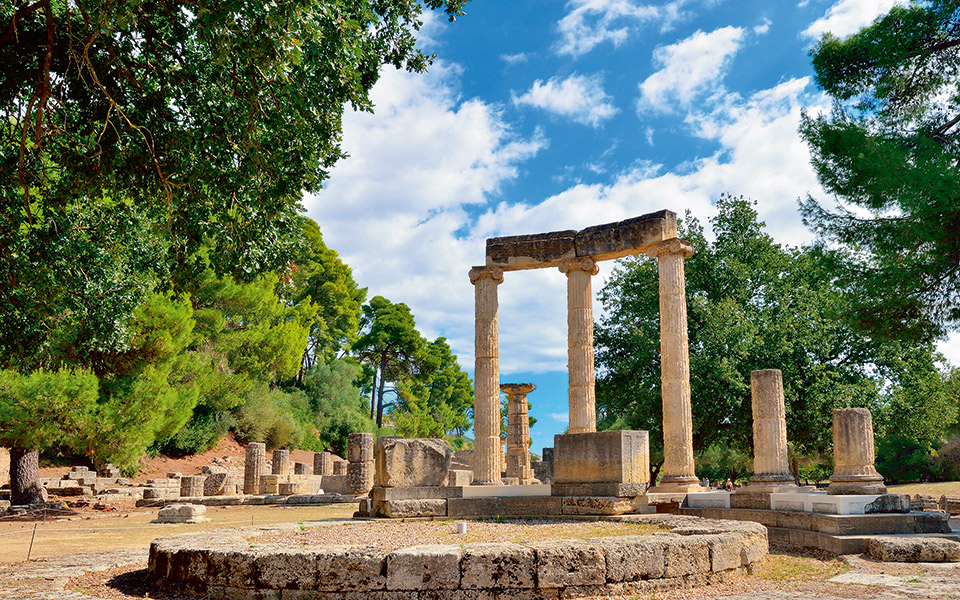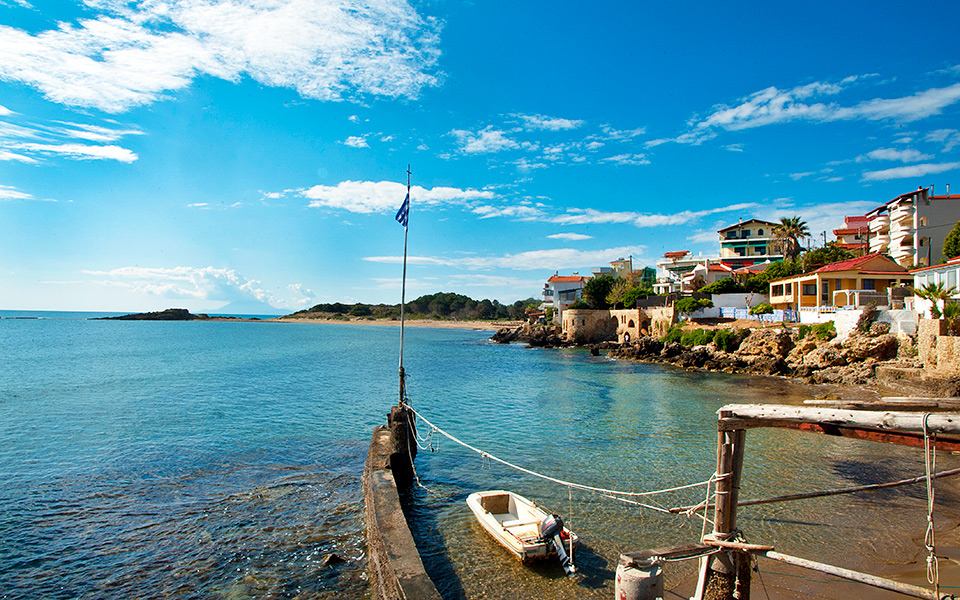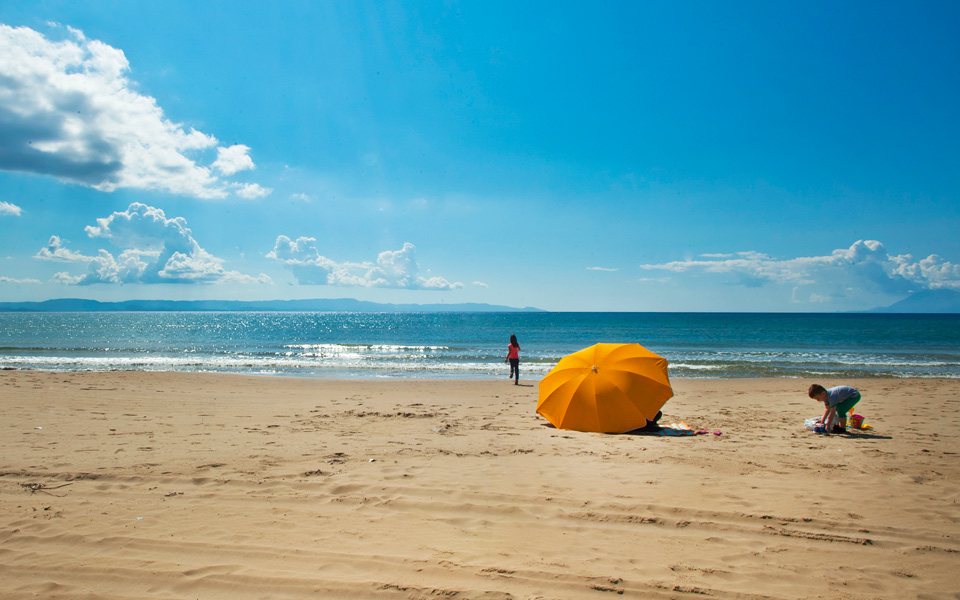Most people who make it as far as this shore on the western coast of the Peloponnese come here to soak up the atmosphere of ancient Olympia. But beyond marveling at the relics of this cornerstone of ancient Greek life whose influence has echoed through the millennia until today, visitors to this region will find that there is so much more awaiting them.
Its status as the home of ancient Olympia aide, the region of Ilia is the epitome of a Greek summer with its golden sand and Blue Flag-awarded beaches, crystal-clear waters, spectacular sunsets and coastal forests. Here are five reasons to visit.

© Clairy Moustafellou

© Clairy Moustafellou
1. Rich history
The star of the region is, no doubt, Olympia. This was one of the most important sanctuaries in the panhellenic world, and many of the temples and monuments from the vast collection which was built here in ancient times survive to be admired today. The temple of Zeus and the temple of Hera are the two notable monuments which dominate the archaeological site, while inside the Archaeological Museum of Olympia, exquisite sculptures such as the Hermes of Praxiteles and Nike of Paionios are on display. The bronze collection is the richest of its kind in the world.
About an hour’s drive away is the archaeological site of Ilida. The ancient city was almost constantly inhabited from the middle Paleolithic age to early Byzantine times. But what makes the biggest impression here is the ancient theater. Built in the 4th century BC, it now hosts performances for the Ancient Ilida summer festival.
From here, it’s worth making the half-hour drive to one of the most beautiful castles in Greece, Chlemoutsi, perched on a hill above above Kastro. One of the best examples of Frankish fortress architecture in the Peloponnese, the castle was built in 1220–1223 to protect the capital of the principality of Achaia, Andravida, and port of Glarentza (Kyllini). Touring the castle, you will see the vaulted rooms of the princely family, huge fireplaces and an exhibition about the life of the Knights of Moria, as the Peloponnese was once called.

© Clairy Moustafellou
2. Something for everyone
One of the most popular parts of coastal Ileia is that which unfolds from Loutra Kyllinis and reaches to Katakolo. Get away from the crowds, feel the sand between your toes and feel like the Ionian Sea is yours. From hotels to campsites, luxurious bars to cheerful beach canteens, spas to mud baths, pine forests and lakes, there is something for everyone here.
If you’re feeling historical, you can visit the area’s archaeological site, enjoy a performance in the ancient theater during the summer, go horse riding at the local equestrian club or delight the kids with a visit to a funfair.
Getting there:
The area lies 300km from Athens via the Corinth–Patras national highway. Using the Tripoli-Pyrgos-Kyparissia highway means an extra 20km. The cost for fuel and tolls comes to around 75 euros.
3. The beaches
Skim the coastline, and wherever you go, you will find yourself on a beach. In Kastro, the beaches seem to change name every few meters depending on the nearest hotel or restaurant (Kastro, Polos, Robinson, Melissa Kalamia). The beach continues to Loutra Kyllinis, known as the Chrysi Akti (Gold Coast), where there are spectacular resorts. The famous beach bar at Arkoudi is a people magnet and rocks momentarily interrupt the vast sandy beach.
Glyfa, immediately after, is a local secret. Many people built small houses right above the shore, while Thines is well-known thanks to its rich sand and artificial forest on either side. Quieter and more family-friendly is Bouka, where the river Pinios runs and locals have built holiday homes, and Marathia beach, whose shady pine forest guarantees relaxation and solitude.

© Clairy Moustafellou
4. The thermal baths
With a temperature of 26°C, the waters at Loutra Kyllinis are suitable for skin, respiratory, musculoskeletal and other conditions. Visitors can take advantage of their beneficial properties, either in the spa or at the source, where many take a mud bath. There, under the eucalyptus trees, the ruins of Roman baths and other charming buildings are the most tangible proof that the waters of the area were utilized for centuries for therapeutic purposes.
5. The Peloponnesian Mykonos
Ileia is perfect for escaping reality and hiding from the world on a secluded beach. But if you want a truly cosmopolitan experience without the long ferry ride, head to the Kourouta region, “the Peloponnesian Mykonos,” as it’s nicknamed. Its reputation is justified, since this area’s profile improves year on year. It’s kept its charm, though. Here, you’re less likely to find beautiful people posing on the beach, and more likely to see people play on the powdery sand, watch the sun sink behind Zakynthos, drink cocktails on the free sun loungers and just enjoying the beach.
Right next to it, you’ll find Palouki, the harbor where you will encounter local fishermen. It’s less cosmopolitan, but the campsite is famous, as are the fish taverns.











